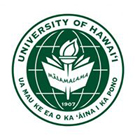- News and articles
- Find usIDP AustraliaIDP BahrainIDP BangladeshIDP CambodiaIDP CanadaIDP ChinaIDP EgyptIDP GhanaIDP Hong KongIDP IndiaIDP IndonesiaIDP IranIDP JordanIDP KenyaIDP KoreaIDP KuwaitIDP LebanonIDP MalaysiaIDP MauritiusIDP Middle EastIDP NepalIDP New ZealandIDP NigeriaIDP OmanIDP PakistanIDP PhilippinesIDP Saudi ArabiaIDP SingaporeIDP Sri LankaIDP Taiwan, ChinaIDP ThailandIDP TurkeyIDP UAEIDP VietnamIDP Corporate
- Social
- English
- Where we operate
- Courses
- Scholarships
- IELTS
- About IDP
- Student Essentials
- News and articles
- Find us
- Find us
- Find nearest IDP offices
- IDP Australia
- IDP Bahrain
- IDP Bangladesh
- IDP Cambodia
- IDP Canada
- IDP China
- IDP Egypt
- IDP Ghana
- IDP Hong Kong
- IDP India
- IDP Indonesia
- IDP Iran
- IDP Jordan
- IDP Kenya
- IDP Korea
- IDP Kuwait
- IDP Lebanon
- IDP Malaysia
- IDP Mauritius
- IDP Middle East
- IDP Nepal
- IDP New Zealand
- IDP Nigeria
- IDP Oman
- IDP Pakistan
- IDP Philippines
- IDP Saudi Arabia
- IDP Singapore
- IDP Sri Lanka
- IDP Taiwan, China
- IDP Thailand
- IDP Turkey
- IDP UAE
- IDP Vietnam
- IDP Corporate
- Social
- Language Switcher
- IDP Education /
- Colleges and Universities /
- United States /
- University of Hawaii - Manoa /
- Bachelor of Science in Trop...

Bachelor of Science in Tropical Agriculture and the Environment - Environmental Urban Horticulture
At UNIVERSITY OF HAWAII - MANOA

Location
United States
Qualification
Bachelor Degree
Fees
USD33336
(2025)
Duration
8 Semester(s)
Next intake
22 August 2025
Entry Score
7.0
IELTSCourse info
Horticulturists play a role in selecting plants and, with landscape designers, choose their placement (and replacement), manage their nutrition, irrigation, pests and diseases, pruning, and procure and manage plants for seasonal purposes. Plants contribute to managing pollution and climate change though their selection, use and positioning in the urban landscape. Special challenges can come up, such as new trends for green roofs and walls, disguising transit lines, massive concepts such as Singapore's Gardens by the Bay development or Dubai's new gardens.
Public Gardens
Traditionally, public gardens include botanical gardens and arboretums, but the definition can extend beyond these limits. Botanical gardens and arboreta have a mission in that they collect and display plants, sometimes opting for horticultural displays that draw in the paying public, and sometimes focusing on conservation, native plant germplasm, and collections of particular plant groups. Besides outdoor collections, many botanical gardens will have a conservatory for tender, non-native plants.
The organization of such gardens requires a director, various assistants, financial managements, record-keeping, research, education and interpretation, and public relations, to name a few. Knowledge of taxonomy, propagation, arboriculture, horticultural operations, volunteer coordination, fund-raising, and numerous other skills offer broad opportunities to careers in public gardens. Some gardens receive support from municipal governments while others charge admission and conduct extensive fund-raising programs.
- Scholarships
- Internships
Entry requirements for University of Hawaii - Manoa
Application Deadline
The application deadline isn't available Speak to an IDP counsellor for more detailed information
Further information
If you aren't eligible for the above entry requirements, you might have a chance to explore pathway options at University of Hawaii - Manoa. If you want to find out more, speak to our counsellors.
THE World Ranking
251st / 1250
THE World RankingWhat our students think
We’ve haven’t received any reviews for this institution yet.
Recommended for you
- Advanced Certificate
- Pocatello , United States
- Next intake:08/2025
- Entry Score: IELTS 5.5
- THE World Ranking:251
- Advanced Certificate
- Amherst , United States
- Next intake:08/2025
- Entry Score: IELTS 6.5
- USD10497 (2025)
- Associate Degree
- Puyallup , United States
- Next intake:07/2025
- Entry Score: IELTS 5.5
- USD10911 (2025)
- THE World Ranking:801
- Associate Degree
- Rochester , United States
- Next intake:08/2025
- Entry Score: IELTS 6.5
- USD56136 (2025)
- THE World Ranking:1001
- Associate Degree
- New York , United States
- Next intake:08/2025
- Entry Score: IELTS 7.0
- USD57978 (2025)
- Associate Degree
- SANTA BARBARA , United States
- Next intake:06/2025
- Entry Score: IELTS 5.5
- USD5415 (2025)
- Associate Degree
- Oceanside , United States
- Next intake:08/2026
- Entry Score: IELTS 5.5
- USD11340 (2025)
- Associate Degree
- Shoreline , United States
- Next intake:06/2025
- Entry Score: IELTS 5.5
- USD9903 (2025)
Your action plan
Step 1
Shortlist your courses
Choose the best three courses you’re most likely to pursue.
Step 2
Check your eligibility
Get an instant in-principle offer for courses with the IDP FastLane tag.
Step 3
Apply through IDP Live
Fill out the form once and use it to apply to multiple courses.
How does IDP FastLane work?
With the FastLane 'Offer in Principle', you'll know in minutes if you'll be accepted!
Select an institution and course
Create your academic profile
Submit your application for an 'Offer in Principle'
Your chosen institution(s) will send you a decision in minutes!
Get ready to apply with an expert counsellor




